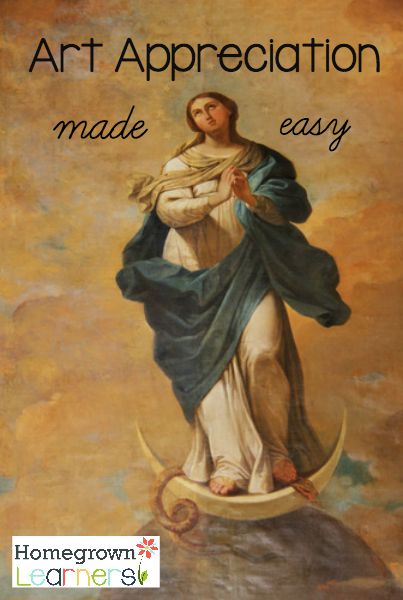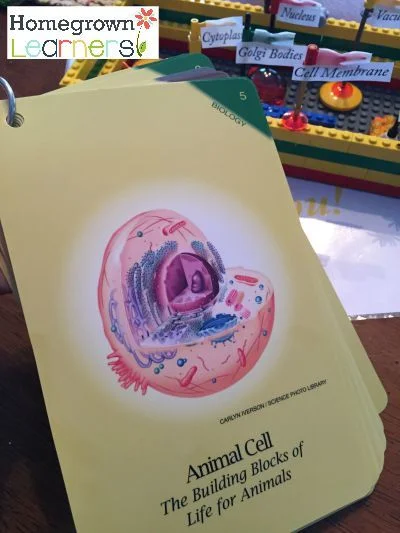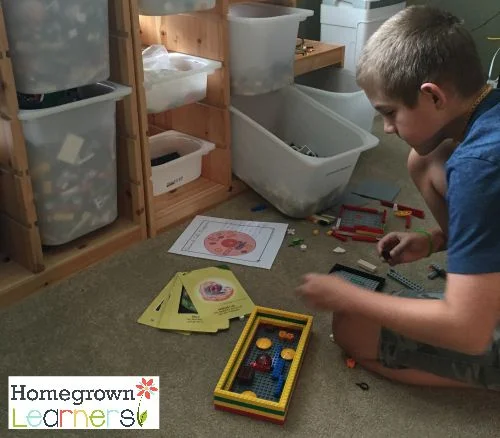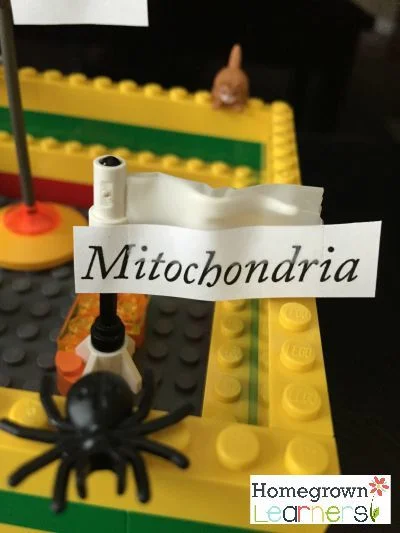I feel very comfortable teaching music appreciation.
Art appreciation is another story.
This year, thanks to our simple morning basket, art appreciation has become EASY and quite enjoyable.
Learning about art and how to APPRECIATE art brings my children one step closer to their creator. It helps them develop a sense of beauty, and it brings further context to our history studies.
One Simple Art Appreciation Resource
As we continue to strive for a more simple, beautiful homeschool, I have chosen just ONE art appreciation resource for this school year.
(You will see that I may offer up other resources, but if we only use this ONE THING, I will know I have provided my children with some art appreciation.)
We study one painting each week - during our morning time.
After breakfast we review the week's memory work, watch CNN Student News, and then have a music appreciation or art appreciation lesson.
Each art time takes us about 15 minutes - just enough time for my children to analyze and talk about the painting of the week. I have been so pleased that names like BOTTICELLI, DURER, and VAN EYCK have been integrated into our conversations!
Our book includes a timeline of artists and when they completed their works, as well as important dates in history, such as the first excavation of ancient Rome, Columbus discovering the New World, the invention of the first spectacles, the first appearance of Halley's Comet, and many other events.
Why have I been neglecting art appreciation for so long when it is this easy and enjoyable?
There are MANY other books in this series, as well. I am anticipating we will be using them after this first book. These are just a few that caught my eye:
Digging Deeper into Art Appreciation
As usually happens in our homeschool, one of my children will become interested in a particular artist through our studies. At that point, I believe it is important to have materials placed throughout our home so they can investigate further if they wish.
In addition to library books I might seek out, I invested (when the kids were little) in the Getting To Know The World's Greatest Artists books. They are informative, silly, and fun - with many cartoons that appeal to children.
Making Art Appreciation Fun With Games
One last resource I want to share with you, and that will be enough.
Remember -- too much information can actually overwhelm and confuse, but a few quality resources made available to our children can enrich their lives.
The Renaissance Art Game is just one example of how to make learning about art fun!
You can play memory match, Go Fish, and also learn about the pieces of art with the book that accompanies the cards. This is BY FAR my favorite art game.
There are some other art cards I have my eye on... which we may need to use in our homeschool this year!











